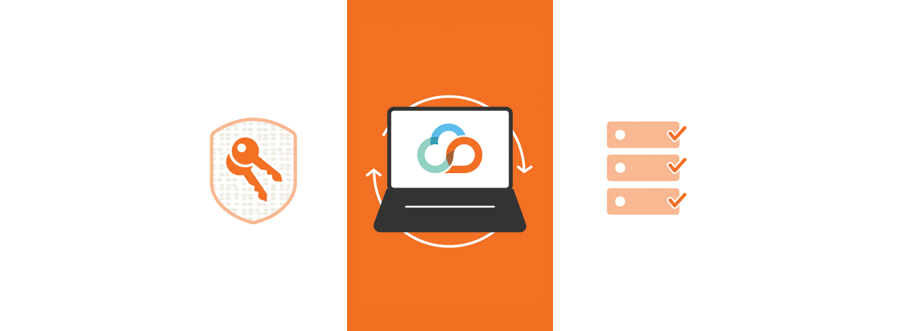While digital technology has unarguably ushered in a wonderful innovation in teaching and learning methodologies, it has also brought with it a unique set of risks and challenges. As higher education institutions are becoming increasingly technology enabled, they are now faced with the additional responsibility of protecting the sensitive data they possess. This is a very real concern – one that cannot be taken lightly.
Recent studies1 suggest that of all industries, education ranks third in information security breaches. Across a span of the last seven years, more than 500 universities have suffered data breaches of some kind.1 Incidents of compromised data records spiked by 103% in the first six months of 2017 as compared to the last half of the previous year.2
This makes IT security for higher education a high priority matter and a huge challenge to overcome. Rather than having to resort to corrective measures after a breach has taken place, the best approach is for institutions to have in place a strategy aligned with proactive prevention vs reactive correction.
Higher education information security is a complicated issue as delicate infrastructure, immense intellectual property and massive amounts of personal information, make institutions particularly vulnerable targets for cyber criminals looking to profit from stolen data. Even a single security breach is enough to damage an institution’s reputation and inflict severe financial losses,3 not to mention serious legal consequences.
Why Educational Institutions are Struggling with Information Security
School demographics show a clear shift towards a more digitally enabled student population that expects instant access and connectivity across all their devices. This need for easy accessibility exacerbates the data security issue. As institutions transition into the cloud for better collaboration and connectivity, there is an exponential increase in the associated risks, and traditional approaches to data governance fail to meet the challenges of the continuously evolving threat landscape.
An effective information security strategy that “will employ a risk-focused, multilayered strategy to secure the institution”4 is therefore an urgent requirement of the time.
A few of the main barriers to an effective information security strategy for higher ed institutions are: –
The “Siloed” Nature of Institutions
Individual departments still tend to remain isolated from each other, and often, there is little co-ordination between them. The absence of integrated systems can give rise to complexities in data management. As different departments require access to different databases, there are multiple end points that make monitoring the security compliance of each end point a near impossible task.
Overworked IT Departments
De-centralized platforms complicate the license distribution process as IT staff must go about manually provisioning access to each end user, matching user groups with their respective applicable terms. This creates extra workload for the IT department as they are forced to spend precious time and resources on clerical tasks, diverting them from their core duties. This decentralization also results in a scenario with multiple entry points for fraud and security threat.
Lack of a Unified Strategy
The absence of a centralized platform directs users to multiple locations to access resources from their preferred vendors. This requires multiple logins at every level, making the verification process much more challenging and far less efficient. As there isn’t any unified, institution-wide strategy in place to enforce fraud proof compliance standards, the likelihood of potential security breaches is greatly increased.
How can Kivuto Cloud help?
Kivuto provides CIOs and IT departments with a tool that helps them develop a risk-based strategy enabling them to detect, respond to, and prevent security threats and challenges.
- Using the Kivuto Cloud platform, Central IT can better control distribution management making compliant distribution easy. Kivuto Cloud can distribute electronic assets of any type including software, e-books, and cloud portals, which means that institutions can manage resources from their vendors on a single platform.
- School, student, and license Information is kept encrypted in a secure location under ISO and PCI compliance standards as well as other applicable privacy laws. Identity obfuscation capabilities allow for institutions to pass obfuscated ID’s, as opposed to PII, to the Kivuto and vendor platforms for enhanced privacy protection, limiting data being put into the cloud.
- Centralization of deployment means only one end point to monitor for security compliance and breaches. The centralized platform does away with the vulnerability of having multiple entry points.
- SSO integration technology maintains secure access with ease of use. Single-sign on integrations allow end user to safely and easily access the platform. Kivuto has in place a robustly secure verification system, along with strict compliance enforcement procedures to ensure that data is kept safe.
- Kivuto’s fraud detection algorithms detect fraudulent transactions faster and more accurately than home-grown detection systems. Around the clock monitoring means that the system is being continuously monitored for cyber-attacks and fraud attempts.
The Kivuto platform can distribute software, courseware and textbooks from a secure and centralized location, perfectly aligned with the stipulated compliance standards. Kivuto Cloud also meets the Microsoft Gold Partner Standards and adheres to GDPR and other privacy and PII regulations.
We can help keep your data secure and optimized, paving the way towards implementing a successful information security strategy for your institution.
To learn more about how your institution can benefit from Kivuto Cloud, please reach us by email at getstarted@kivuto.com or by phone at 1-855-526-3005.
Click here to learn more about Kivuto Cloud
Sources:
1 Your Security Breach is Coming. Are you ready?
2 EdTech Magazine – Education Sector Data Breaches Skyrocket in 2017














No Comments